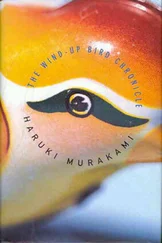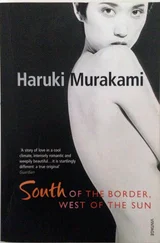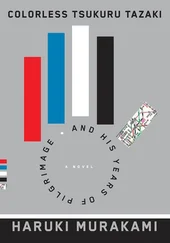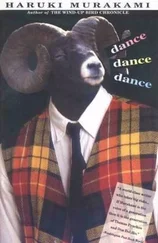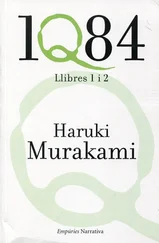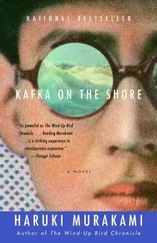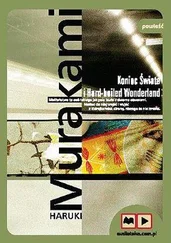I read Naoko's letter all the way through, and then I read it again.
After that I went downstairs, bought a Coke from the vending machine, and drank it while reading the letter one more time. I put the seven pages of writing paper back into the envelope and laid it on my desk. My name and address had been written on the pink envelope in perfect, tiny characters that were just a bit too precisely formed for those of a girl. I sat at my desk, studying the envelope. The return address on the back said Ami Hostel.
An odd name. I thought about it for a few minutes, concluding that the "ami" must be from the French word for "friend".
After putting the letter away in my desk drawer, I changed clothes and went out. I was afraid that if I stayed near the letter I would end up reading it 10, 20, who knew how many times? I walked the streets of Tokyo on Sunday without a destination in mind, as I had always done with Naoko. I wandered from one street to the next, recalling her letter line by line and mulling each sentence over as best I could. When the sun went down, I returned to the dorm and made a long-distance call to the Ami Hostel. A woman receptionist answered and asked my business. I asked if it might be possible for me to visit Naoko the following afternoon. I left my name and she said I should call back in half an hour.
The same woman answered when I called back after dinner. It would indeed be possible for me to see Naoko, she said. I thanked her, hung up, and put a change of clothes and a few toiletries in my rucksack.
Then I picked up The Magic Mountain again, reading and sipping brandy and waiting to get sleepy. Even so, I didn't fall asleep until after one o'clock in the morning.
As soon as I woke at seven o'clock on Monday morning, I washed my face, shaved, and went straight to the dorm Head's room without eating breakfast to say that I was going to be gone for two days hiking in the hills. He was used to my taking short trips when I had free time, and reacted without surprise. I took a crowded commuter train to Tokyo Station and bought a bullet-train ticket to Kyoto, literally jumping onto the first Hikari express to pull out. I made do with coffee and a sandwich for breakfast and dozed for an hour.
I arrived in Kyoto a few minutes before eleven. Following Naoko's instructions, I took a city bus to a small terminal serving the northern suburbs. The next bus to my destination would not be leaving until 11.35, I was told, and the trip would take a little over an hour. I bought a ticket and went to a bookshop across the street for a map.
Back in the waiting room, I studied the map to see if I could find exactly where the Ami Hostel was located. It turned out to be much farther into the mountains than I had imagined. The bus would have to cross several hills in its trek north, then turn around where the canyon road dead-ended and return to the city. My stop would be just before the end of the line. There was a footpath near the bus stop, according to Naoko, and if I followed it for 20 minutes I would reach Ami Hostel. No wonder it was such a quiet place, if it was that deep in the mountains!
The bus pulled out with about 20 passengers aboard, following the Kamo River through the north end of Kyoto. The tightly packed city streets gave way to more sparse housing, then fields and vacant land.
Black tile roofs and vinyl-sided greenhouses caught the early autumn sun and sent it back with a glare. When the bus entered the canyon, the driver began hauling the steering wheel this way and that to follow the twists and curves of the road, and I began to feel queasy. I could still taste my morning coffee. By the time the number of curves began to decrease to the point where I felt some relief, the bus plunged into a chilling cedar forest. The trees might have been old growth the way they towered over the road, blocking out the sun and covering everything in gloomy shadows. The breeze flowing into the bus's open windows turned suddenly cold, its dampness sharp against the skin.
The valley road hugged the river bank, continuing so long through the trees it began to seem as if the whole world had been buried for ever in cedar forest - at which point the forest ended, and we came to an open basin surrounded by mountain peaks. Broad, green farmland spread out in all directions, and the river by the road looked bright and clear. A single thread of white smoke rose in the distance. Some houses had laundry drying in the sun, and dogs were howling. Each farmhouse had firewood out front piled up to the eaves, usually with a cat resting somewhere on the pile. The road was lined with such houses for a time, but I saw not a single person.
The scenery repeated this pattern any number of times. The bus would enter cedar forest, come out to a village, then go back into forest. It would stop at a village to let people off, but no one ever got on. Forty minutes after leaving the city, the bus reached a mountain pass with a wide-open view. The driver stopped the bus and announced that we would be waiting there for five or six minutes: people could step down from the bus if they wished. There were only four passengers left now, including me. We all got out and stretched or smoked and looked down at the panorama of Kyoto far below. The driver went off to one side for a pee. A suntanned man in his early fifties who had boarded the bus with a big, rope-tied cardboard carton asked me if I was going out to hike in the mountains. I said yes to keep things simple.
Eventually another bus came climbing up from the other side of the pass and stopped next to ours. The driver got out, had a short talk with our driver, and the two men climbed back into their buses. The four of us returned to our seats, and the buses pulled out in opposite directions. It was not immediately clear to me why our bus had had to wait for the other one, but a short way down the other side of the mountain the road narrowed suddenly. Two big buses could never have passed each other on the road, and in fact passing ordinary cars coming in the other direction required a good deal of manoeuvring, with one or the other vehicle having to back up and squeeze into the overhang of a curve.
The villages along the road were far smaller now, and the level areas under cultivation even narrower. The mountain was steeper, its walls pressed closer to the bus windows. They seemed to have just as many dogs as the other places, though, and the arrival of the bus would set off a howling competition.
At the stop where I got off, there was nothing - no houses, no fields, just the bus stop sign, a little stream, and the trail opening. I slung my rucksack over my shoulder and started up the track. The stream ran along the left side of the trail, and a forest of deciduous trees lined the right. I had been climbing the gentle slope for some 15 minutes when I came to a road leading into the woods on the right, the opening barely wide enough to accommodate a car. AMI HOSTEL PRIVATE NO TRESPASSING read the sign by the road.
Sharply etched tyre tracks ran up the road through the trees. The occasional flapping of wings echoed in the woods. The sound came through with strange clarity, as if amplified above the other voices of the forest. Once, from far away, I heard what might have been a rifle shot, but it was a small and muffled sound, as though it had passed through several filters.
Beyond the woods I came to a white stone wall. It was no higher than my own height and, lacking additional barriers on top, would have been easy for me to scale. The black iron gate looked sturdy enough, but it was wide open, and there was no one manning the guardhouse.
Another sign like the last one stood by the gate: AMI HOSTEL PRIVATE NO TRESPASSING. A few clues suggested the guard had been there until some moments before: the ashtray held three butt- ends, a tea cup stood there half empty, a transistor radio sat on a shelf, and the clock on the wall ticked off the time with a dry sound. I waited a while for the person to come back, but when that showed no sign of happening, I gave a few pushes to something that looked as if it might be a bell. The area just inside the gate was a car park. In it stood a mini-bus, a four-wheel drive Land Cruiser, and a dark blue Volvo.
Читать дальше

